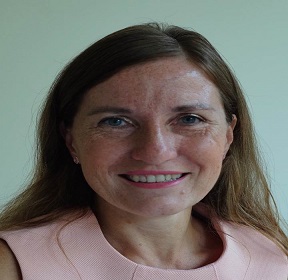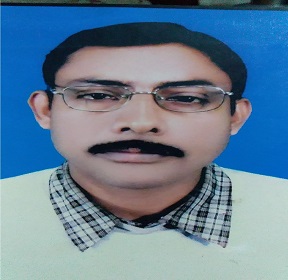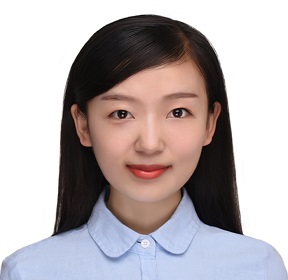Speakers
Souvik Basaka
Dr. B.C. Roy College of Pharmacy IndiaTitle: Molecular modelling and design of a novel nitrogen containing mutant p53 inhibitor having potential to restore its beneficial wild type function
Abstract:
Cancer is one of the world’s leading diseases, causing 9-10 million global deaths as per WHO (World Health organization) data in 2018. One of the major reasons of cancer is mutation in cellular guardian protein P53, whose mutation endows it with loss of function due to loss of its prime important tertiary structure. 50% of cancer cases are basically registered with P53 mutation either somatic or germline. To address this, one novel strategy has been investigated over the last few years is to restore P53 function by restoring its tertiary structure and interaction dynamics via interaction with novel organic ligands. In pursuance, we have a designed a novel nitrogen based heterocyclic ligand which can restore mutant P53 function, especially focussing on Y220C, an aberrant mutation found in breast cancer cells. Interestingly the ligand revealed interactions with the most hotspot zones of P53 that is residue 121-185, residue 242-250 and residue 275-282 insinuating its broad spectrum of action. The ligand was designed by de novo ligand design via fragment based joining and disjoining algorithm on the in situ ligand PK9324 (PDB ID:EYB, Protein PDB: 6GGD) using programme LEA3D. The genetic algorithm was used to create the ligands offsprings and PLANTS based docking with scoring function was used to select the best fitting ligand inside the binding site. Later, molecular dynamics simulation revealed stable seating of the ligand within the cavity together with hydrogen bonding interactions with the key amino acid residues spanning the cavity. The torsional flexibility of the ligand was supposed to be responsible for such nice seating and interaction which could restore the proximity of the S3/S4 and S7/S8 loop interactions enabling refolding potential of the protein. The cysteine residue at 220 position was seen rotated due to ligand interaction shortening the hydrophobic cavity in between which was seen after the mutation in the P53 protein. The dipole moment was restored to original indicating establishment of electrostatic interactions in between the loops which was lost after mutation. The toxicity score in silico has been encouraging by SWISS ADME and Boiled Egg diagram, a drug likeliness screening was also undertaken by Molinspiration and SWISS ADME. The recovery data was promising and altogether it suggests to be a promising anticancer ligand restoring vicious and non-functional mutant P53 into a functional wild type equivalent one.
Biography:
Souvik Basak, age 39 years, has completed his B.Pharm. and M.Pharm from Jadavpur University, Kolkata, India (2004 and 2006 respectively) and accomplished his PhD from Nanyang Technological University, Singapore at 2013. He has been working as Associate Professor, Division of Pharmaceutical Chemistry in Dr. B.C. Roy College of Pharmacy & Allied Health Sciences, Durgapur, WB, India since 2018. He has published more than 30 papers in various international journals of repute, several book chapters and more than 50 conference proceedings/presentations. He has published one Indian patent and associated as research consultant with various international research farms and Professors. He is currently also a member of fellow of Institute of Chemist, India
Iris Valtingojer
Sanofi Oncology Research FranceTitle: HIPPO-YAP1: a promising new pathway for cancer therapy
Abstract:
The HIPPO signaling pathway is an evolutionary conserved pathway that has received increasing attention in cancer research over the past years. The deregulation of HIPPO kinase signaling and the subsequent activation of the YAP1 transcriptional regulator drives tumor cell proliferation, protects from therapy by promoting cell survival and signals towards a tumor permissive immune environment. In this presentation, I will speak about how to detect YAP1 activation and will present examples of tumors with high YAP1 activity and deregulated HIPPO kinase signaling. I will further give you an overview on strategies for targeting the HIPPO-YAP1 pathway in cancer therapy, including recent advancements on small molecule allosteric ligands of TEAD proteins, which are the preferred transcription factor binding partners of YAP1 and represent the most terminal effectors of the HIPPO-YAP1 signaling cascade.
Biography:
Iris Valtingojer is a group leader in the Molecular Oncology Research Department from Sanofi, France. Her professional experience lies in the leadership of small molecule drug discovery projects in a precision medicine context. Over the past 10 years she has taken multiple projects from target identification up to development candidate selection. Iris’ research team focuses on new and innovative pathways for cancer therapy and the identification of targets and drugs in this context. She joined Sanofi as a Post-Doc in Biochemistry and holds a Ph.D. from the Max-Planck Institute in Cologne, Germany, as well as a Master degree in Biology and Biochemistry from the University of Vienna, Austria.
Marsha L Pierce
Midwestern University USATitle: Preclinical evaluation of marine natural products for neuroscience drug development
Abstract:
As pharmaceutical companies have largely exited neuroscience drug development, longer life spans have resulted in an increased economic and healthcare burden of central nervous systsm disorders resulting in a substantial need for innovation in neuroscience drug development. Natural products play important roles in ecology, biotechnology and biomedicine, with an estimated 60-70% of active compounds in clinical pharmaceutical formulations derived from or inspired by natural products. The marine environment is an extraordinarily rich source of species diversity, and marine organisms display vast chemical and biological diversity. Adaptation to their unique habitat contributes to marine organisms producing a wide variety of biologically active primary and secondary metabolites. Although major pharmaceutical companies have largely ceased exploring marine natural products following the development of large synthetic compound libraries, marine natural products continue to have a higher success rate than other sources of drug leads. In this study, we screen marine natural products for neuroactivity in murine primary cortical cultures, using a hight-throughput FLIPR screening for modulation of calcium channels using Fluo8-AM indicator dye for detection. Additionally, we screen for potassium channel modulation using FMP blue indicator dye. Finally, in neuroactive drugs, we screen for neurite outgrowth and/or neurotoxicity using live-dead assays. Together, these data identify identify neuroactive compounds which can then be semi-synthetically modified to expand compound libraries for neuroscience drug development. In addition to our laboratory work, we curate an up-to-date Global Marine Pharmaceuticals Pipeline https://www.marinepharmacology.org/ to track marine drugs through the clinical and preclinical pipeline.
Biography:
Marsha Pierce completed her PhD and Creighton University in the Department of Biomedical Sciences and her postdoctoral research at Creighton University in the Department of Pharmacology and Neuroscience. She is an Assistant Professor of Pharmacology at Midwestern University and co-administrator of the Global Marine Pharmaceuticals Pipeline. She has published 13 papers in reputed journals.
Esin Aki-Yalcin
School of Medical Sciences TurkeyTitle: Insight into mechanism of action of anticancer bicyclic compounds
Abstract:
DNA topoisomerase II enzyme is one of the popular anticancer treatment approaches which this enzyme controls and modifies the topological states of DNA and plays key roles in DNA replication, transcription and chromosome segregation1. It is known that one class of topoisomerase II inhibitors, known as topo II poisons, bind to the transient enzyme-DNA complex and inhibit the religation of DNA generating single- and double-stranded breaks that cause the to apoptosis and cell death2.
Mechanism of action has been defined between DNA topoisomerase II and the series of bicyclic compounds3 which were examined in detail using molecular modeling studies such as molecular docking and pharmacophore analysis performed by using Discovery Studio4 and LigandScout5. This study also provides a model to design novel and more potent anticancer agents as human topoisomerase II poisons.
Biography:
Esin AKI YALCIN has completed his PhD at the age of 28 years from Ankara University, Faculty of Pharmacy, Department of Pharmaceutical Chemistry and she was 38 years old when she got the Full Professor Degree. She had some administrative works such as Chair of Pharmaceutical Chemistry Department, Chair of Pharmaceutical Sciences Division, Dean of Faculty of Paharmacy, Rector’s Consultant of Ankara University. She was the past President of Asian Federation of Medicinal Chemistry. She has published more than 100 papers in reputed journals and has been serving as an editorial board member of repute
Foziyah Zakir
Delhi Pharmaceutical Sciences and Research University IndiaTitle: Qbd panorama in drug delivery: option or coercion
Abstract:
Optimization is an important step in the process of drug delivery design and development. Previously OFAT (one factor at a time) approach was used for optimization; however it is becoming an age old process. Now-a-days, pharmaceutical industries are opting for QbD (quality by design approach) which has become a coercion. However, on understanding the regulatory perspectives of pharmaceutical development, it is seen that QbD is benediction rather than a coercion. QbD reduces the variability through rational and systemic optimization. Maximum number of information can be obtained using minimum number of studies and it ensures the quality of the product.
With drug discovery being a cost-extensive program, pharmaceutical industries are more focussed on generic product development. Implementation of QbD not only ensures the quality of the product in minimum time and money but also reduces the post-approval submission load. In fact, many regulatory agencies across the world including US FDA has made implementation of QbD, a mandate requirement to develop all generic formulations. The presentation will focus on the various techniques and principles of QbD so that it is easier for the user to understand and implement
Biography:
Dr. Zakir has completed her PhD from Jamia Hamdard (NIRF rank 1), India. Dr. Zakir is currently working as an Asst. Prof., Delhi Pharmaceutical Sciences and Research University (India’s First Pharmacy University and second in the world). She has more than 20 referred articles in high impact journals >4 (h-index=10, >400 citations). She has authored numerous book chapters by Elsevier and Bentham publishers. She has published more than 50 conference proceedings and abstracts. She has also received various awards such as Young Rearcher Award, Award for Academic Excellence, best poster and oral presentation awards.
Dipankar Bhattachayya
Chichuria Institute of Medical Science & Research IndiaTitle: Reposition of montelukast either alone or in combination with levocetirizine against sars-cov-2
Abstract:
It has been hypothesised that antiallergic medications (AAMs) like montelukast and levocetirizine both the two bitter chloro compounds could be repurposed either alone or combinedly as an antiviral against SARS-CoV-2, like chloroquine/hydroxychloroquine (CQ/HCQ), anorher two bitter chloro compounds. Both AAMs and CQ/HCQ are bitter tasted chloro compounds. Depending on their these two similar physical properties and the safety and efficacy of AAMs by controlling over post viral episodes as comparing with viral inhibitory activities including SARS-CoV-2 by CQ/HCQ, a reposition of AAMs either alone/combinedly could be rationalised as an antiviral approach to nCoV.
Biography:
Bhattacharyya has completed his Ph. D. at the age of 31yrs from Bose Institute and Jadavpur University, Kolkata, India and Postdoctoral studies from Neurobiotechnology of Ohio State University, USA. He has more than 29 years of research and 5 years of teaching experiences in different University and Institutes. Formerly he was a Protein Biochemist but presently doing research on repurpose of covid medicines as a Principal Investigator from Chichuria Institute of Medical Science and Research, India. He has more than dozon of publication in reputed journals including patents and review. Also discovered and developed some specific natural medicines effective against asthma/SARS, gastritis and pain
Jingfang Yang
ChinaTitle: Larmd: integration of bioinformatic resources to profile ligand-driven protein dynamics with a case on the activation of estrogen receptor
Abstract:
Protein dynamics is central to all biological processes, including signal transduction, cellular regulation and biological catalysis. Among them, in-depth exploration of ligand-driven protein dynamics contributes to an optimal understanding of protein function, which is particularly relevant to drug discovery. Hence, a wide range of computational tools have been designed to investigate the important dynamic information in proteins. However, performing and analyzing protein dynamics is still challenging due to the complicated operation steps, giving rise to great difficulty, especially for nonexperts. Moreover, there is a lack of web protocol to provide online facility to investigate and visualize ligand-driven protein dynamics. To this end, in this study, we integrated several bioinformatic tools to develop a protocol, named Ligand and Receptor Molecular Dynamics (LARMD, http://chemyang.ccnu.edu.cn/ccb/server/LARMD/), for profiling ligand-driven protein dynamics. To be specific, estrogen receptor (ER) was used as a case to reveal ERβ-selective mechanism, which plays a vital role in the treatment of inflammatory diseases and many types of cancers in clinical practice. Two different residues (Ile373/Met421 and Met336/Leu384) in the pocket of ERβ/ERα were the significant determinants for selectivity, especially Met336 of ERβ. The helix H8, helix H11 and H7-H8 loop influenced the migration of selective agonist (WAY-244). These computational results were consistent with the experimental results. Therefore, LARMD provides a user-friendly online protocol to study the dynamic property of protein and to design new ligand or site-directed mutagenesis.
Biography:
Jingfang Yang has completed her PhD at the age of 28 years from the College of Chemistry, Central China Normal University. She visited the college of pharmacy, the University of Kentucky as an exchange PHD for two years during this period. Now she is postdoctoral. She has published more than 30 papers in SCI journals and has already awarded three grants.







